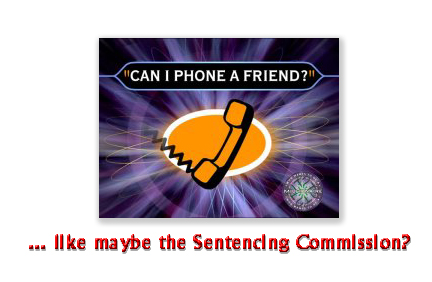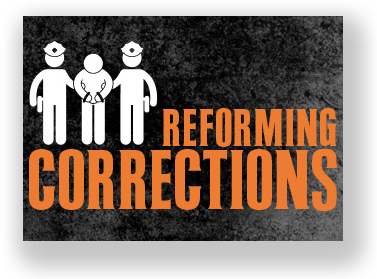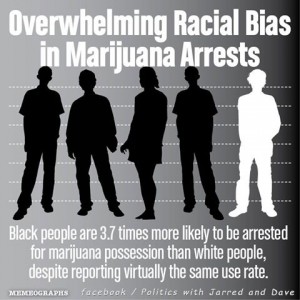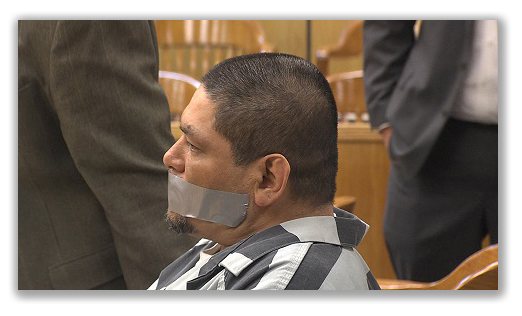We post news and comment on federal criminal justice issues, focused primarily on trial and post-conviction matters, legislative initiatives, and sentencing issues.
DADDY SAYS…
 Serial college football coach Terry Bowden – who spent sojourns between his many coaching gigs as a TV sports analyst – delighted in quoting his father, legendary Florida State coach Bobby Bowden. “Daddy says…” Terry would start out, and then deliver a gem of football wisdom like Moses delivering the stone tablets.
Serial college football coach Terry Bowden – who spent sojourns between his many coaching gigs as a TV sports analyst – delighted in quoting his father, legendary Florida State coach Bobby Bowden. “Daddy says…” Terry would start out, and then deliver a gem of football wisdom like Moses delivering the stone tablets.
We almost regret that Bobby’s been busy the past year coaching the University of Akron Zips to a lackluster 5-7 season, because we would like hearing him tell us “Daddy says… boys without fathers wear earrings to be like their mommas…” Yeah, really. Bobby said that.
Our point is that just because “Daddy says” it, it doesn’t mean it’s so. That’s the same point the 5th Circuit made in a decision handed down earlier this week.
 Euneisha Hearns was a mortgage loan officer involved in a rather plain vanilla conspiracy. She held customers lie to get mortgages, which was something of a sport in the halcyon days before the market collapsed in 2008. In Euneisha’s case, buyer interested in purchasing property on Brownstone Court in Dallas lacked the cash for a down payment. Hearns whipped up a loan application for him that puffed the value of the place and his ability to pay, netting enough for the buyer to close the deal and use some of the loan proceeds for the down payment (sort of like a snake eating itself).
Euneisha Hearns was a mortgage loan officer involved in a rather plain vanilla conspiracy. She held customers lie to get mortgages, which was something of a sport in the halcyon days before the market collapsed in 2008. In Euneisha’s case, buyer interested in purchasing property on Brownstone Court in Dallas lacked the cash for a down payment. Hearns whipped up a loan application for him that puffed the value of the place and his ability to pay, netting enough for the buyer to close the deal and use some of the loan proceeds for the down payment (sort of like a snake eating itself).
Unsurprisingly, the buyer defaulted, the false statements came to light, and Euneisha was indicted. An old lawyer we used to work with liked to say, “no thief only steals once,” and this maxim apparently held here. There wasn’t just one bad loan at Euneisha’s. There were at least ten the government knew of.
Euneisha figured she was on the hook for about $180,000 (the amount of the Brownstone loan, an amount that will probably buy a storage shed in San Francisco). But the Sentencing Guidelines let a court set the loss based on the offense itself and related conduct. The presentence report prepared after trial said the conspiracy was responsible for total loss of $866,000, which included the Brownstone loan and “loss amounts related to nine other properties.”
“What other properties?” asked Euneisha. The PSR retorted that “the Government has identified 10 properties [including the Brownstone Property] that involved fraud in the mortgage loan process. Government records reflect that with respect to these properties… Hearns [and her co-conspirators] were all involved in the scheme to defraud.”
Ah, the “Daddy says…” gambit. The PSR otherwise provided no information or evidence to support the loss amounts or Euneisha’s involvement in the other nine deals. The government presented evidence with respect to three of these properties at trial, but the remaining six properties were not mentioned either at trial or at sentencing. Nothing in the record showed when the six remaining transactions occurred, whether criminal activity was associated with the transactions, or whether Euneisha had even heard of them. Who bother? The government says, the PSR repeats. Game, set, match.
 Euneisha did not offer evidence to show that she was not involved with the other properties. It would have been hard to do so, to prove a negative. It’s especially tough in loss calculation, because loss amounts “need not be determined with precision” and “all that is necessary is that the finding be plausible in light of the record as a whole.” What’s more, PSRs – which, like history, are written by the winners – are generally considered “reliable evidence for sentencing purposes.” The district court concluded that “the information contained in the presentence report has sufficient indicia of reliability to support its probable accuracy.” It held Euneisha responsible for all $866,000.
Euneisha did not offer evidence to show that she was not involved with the other properties. It would have been hard to do so, to prove a negative. It’s especially tough in loss calculation, because loss amounts “need not be determined with precision” and “all that is necessary is that the finding be plausible in light of the record as a whole.” What’s more, PSRs – which, like history, are written by the winners – are generally considered “reliable evidence for sentencing purposes.” The district court concluded that “the information contained in the presentence report has sufficient indicia of reliability to support its probable accuracy.” It held Euneisha responsible for all $866,000.
B ut as another sportscasters, the equally legendary Lee Corso, likes to say, “Not so fast, my friend!” This week, the 5th Circuit vacated the sentence. Sure, the Court said, “a district court may adopt the findings of the PSR without additional inquiry if those facts have an evidentiary basis with sufficient indicia of reliability and the defendant does not present rebuttal evidence or otherwise demonstrate that the information is materially unreliable.” What’s more, a defendant has the burden of showing that the information in the PSR is materially unreliable.
ut as another sportscasters, the equally legendary Lee Corso, likes to say, “Not so fast, my friend!” This week, the 5th Circuit vacated the sentence. Sure, the Court said, “a district court may adopt the findings of the PSR without additional inquiry if those facts have an evidentiary basis with sufficient indicia of reliability and the defendant does not present rebuttal evidence or otherwise demonstrate that the information is materially unreliable.” What’s more, a defendant has the burden of showing that the information in the PSR is materially unreliable.
However, the problem here is that the PSR contained no information to support the loss amounts and no evidence Euneisha had anything to do with the other transactions. The government only mentioned three of the nine properties at trial. As for the others, “the facts contained in the PSR regarding these six properties lack an evidentiary basis with sufficient indicia of reliability,” the Circuit said. “Although a PSR may be considered as evidence by the court when making sentencing determinations, bare assertions made therein are not evidence standing alone.”
 The appellate panel made clear that Euneisha was not at fault for failing to disprove the PSR’s loss claim. “If the factual recitation in the PSR lacks sufficient indicia of reliability,” the Court held, “then it is error for the district court to consider it at sentencing — regardless of whether the defendant objects or offers rebuttal evidence.”
The appellate panel made clear that Euneisha was not at fault for failing to disprove the PSR’s loss claim. “If the factual recitation in the PSR lacks sufficient indicia of reliability,” the Court held, “then it is error for the district court to consider it at sentencing — regardless of whether the defendant objects or offers rebuttal evidence.”
The case will go back for resentencing.
United States v. Hearns, Case No. 16-40222 (5th Cir., Jan. 9, 2017)
– Thomas L. Root




















 If the right to be free of restraint is a fundamental one, that doesn’t mean that Peter Pervert can’t be civilly committed. Rather, it just means that the process by which he is locked up, treated and continually detained would be subject to strict scrutiny.
If the right to be free of restraint is a fundamental one, that doesn’t mean that Peter Pervert can’t be civilly committed. Rather, it just means that the process by which he is locked up, treated and continually detained would be subject to strict scrutiny.






 Veronica on “voice” lessons, sessions that included a sexual component. Finally,
Veronica on “voice” lessons, sessions that included a sexual component. Finally,




